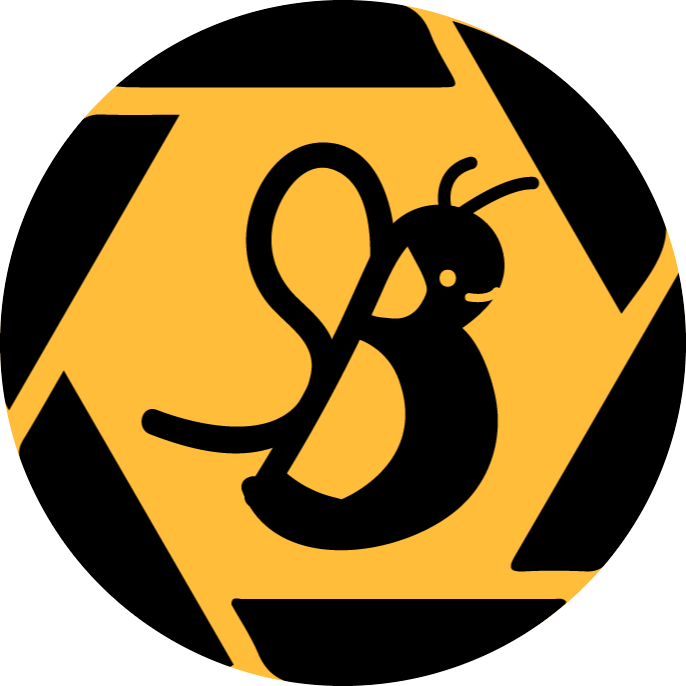Help wanted “finding that bee”, rare bees found in MO/IL, 2023 BeeBlitz, invasive mosquitoes
Help Wanted! Shutterbee 2.0 Pilot Study
Are you ready for a new Shutterbee adventure? We are piloting a study this year to track bee movement, and we’d like your help. This is a great opportunity to switch gears but still learn about bees and contribute to Shutterbee.
Haley Gojohn is conducting her senior thesis this summer on bee movement in urban and suburban landscapes. Using enamel paint, she and her team will be marking bees at two focal gardens, one in Webster Groves and one in south St. Louis City. We are then planning to search for those marked bees at other gardens at set distances from the focal garden (ca. 100m, 250m, 500m, 750m, and 1000m).
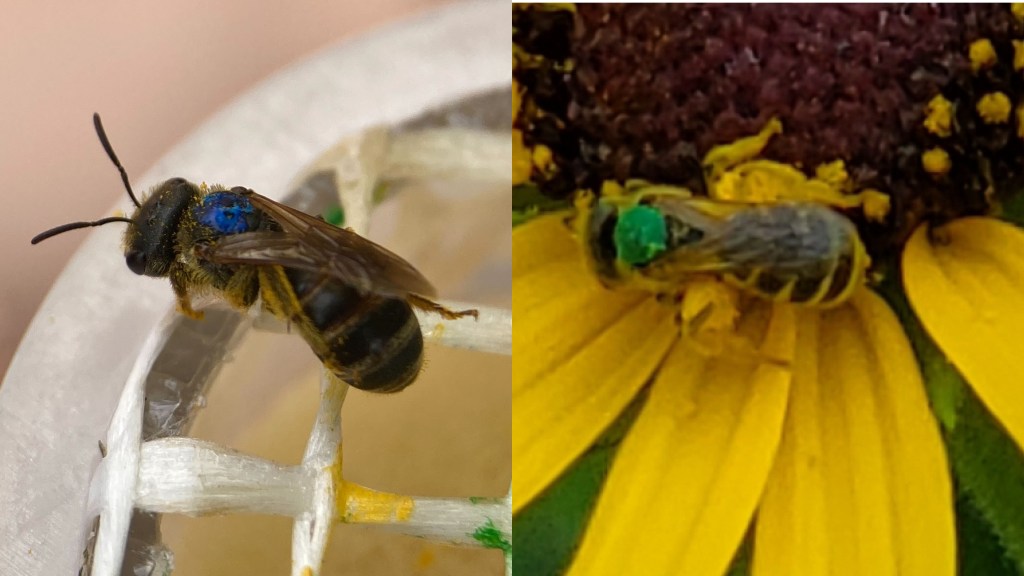
The request: If you notice any bees with small dots of enamel paint on its thorax (usually orange, yellow, or white), please add it to the “Shutterbee Mark-Recapture” iNaturalist project using the steps in the figure below. If you are on your computer, you can also tag us (nicolem42 or hgojohn12) in a comment, and we can add it to the project for you.

If you find the bee during your normal Shutterbee survey, you do not need to resubmit the photo, just add it to this project as shown above. Please reach out if you have any challenges or questions.
The invitation: If you are interested in switching gears or trying something new, we invite you to conduct 30-minute photo surveys at public location. We plan to survey each location three times a week. These surveys are a bit different in that we are searching specifically for marked bees, rather than trying to photograph all bees that we see.
The public locations: a park in Webster Groves, a community garden in St. Louis City, and a neighborhood naturescape in St. Louis City. They are all beautiful places to spend an afternoon!
If you are interested in participating in a different type of photo survey, email us at shutterbee@webster.edu.
Thank you in advance for your efforts!
Two rare bees have been sighted in the region!
Lemon Cuckoo Bumble Bee by Ned Seigel
Shutterbee participant Ned Siegel (@nedster) started a surprising conversation among bee experts on iNaturalist over the weekend. He found a lemon cuckoo bumble bee (Bombus citrinus) at his Shutterbee survey location!

Rather than starting a nest of her own, a mated queen will lay its eggs in the nests of other bumble bees, particularly the common bumble bee (B. impatiens), the half-black bumble bee (B. vagans), and the two-spotted bumble bee (B. bimaculatus). A mated queen will select a suitable hives of another bumble bees, and once she enters, she will use chemical signals to trick the host bees into thinking she is one of them. She will then lay her eggs in the egg cells and leave to find another hive to infiltrate. If she is found out, she will either leave or attack the queen and attempt take over the whole hive!
While it’s historic range includes southern Illinois, where Ned observed this female, the species is quite rare. Because they depend on the other bee species in their area, they can only persist if populations of the other species are healthy and relatively large. That says great things for your garden and neighborhood, Ned!
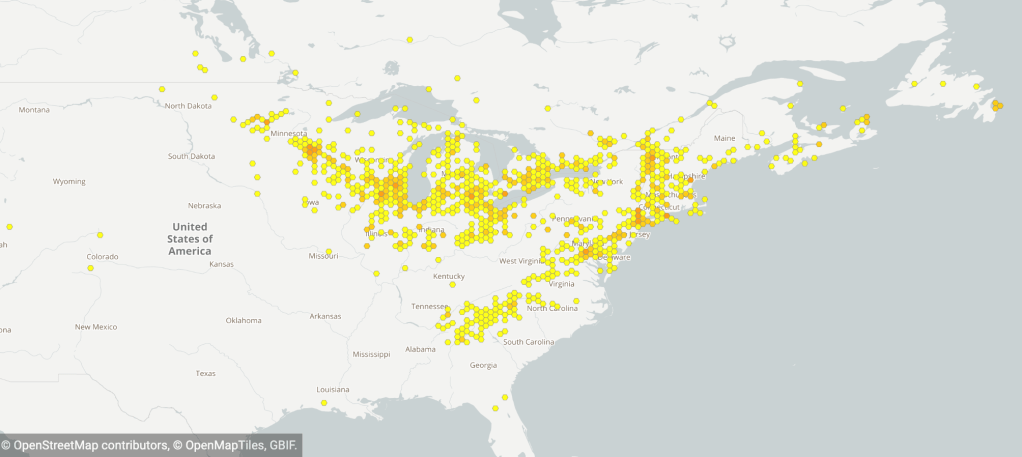
California digger-cuckoo bee bound at the Sach’s Butterfly House
Tad Yankoski of the Sophia M. Sachs Butterfly House posted in our Facebook group that he found what he thought was the California digger-cuckoo bee (genus: Brachymelecta)! This bee was scoping out a large nest aggregation of Missouri blueberry digger bee (genus: Habropoda), presumably in search of nests to lay its eggs. Cuckoo bees do not collect pollen to provision their young. Instead, they let their “victims” do all the work. Note that this bee doesn’t have any pollen-collecting hairs, because she doesn’t need it to carry pollen!
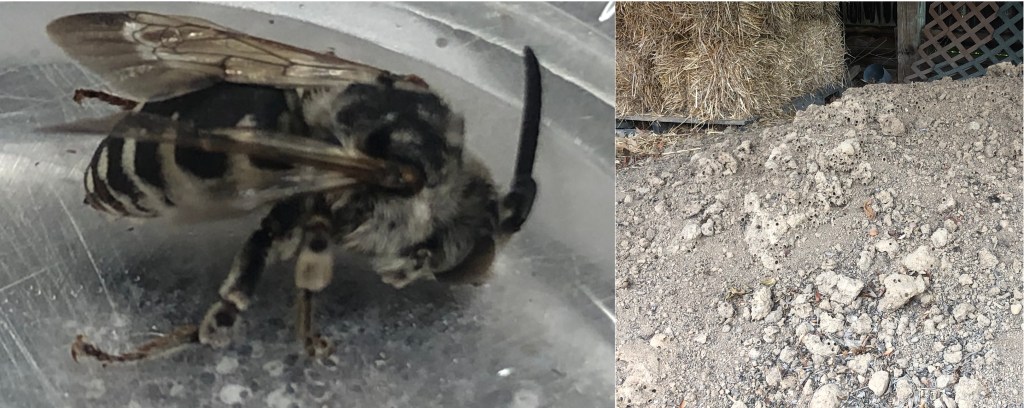
While it is mostly common in California, there are several records throughout the mountain west and the central plains. Tad’s observation, however, is the only one from Missouri. That isn’t to say more aren’t out there! They just haven’t been documented in iNaturalist yet.

We took our team out to see the “mound o’ digger bee nests” and saw a few of the cuckoo bees still searching for nests to parasitize, despite the fact that the digger bees were no longer active. We had a blast! We hope to look more closely into the relationship the coming year when the digger bee is back in season.

2023 Bee Blitz
On June 23, many members of the Shutterbee community came together in Forest Park. It was a great day for bee photography at Forest Park – sunny and warm! During this event we did a photo survey of the restored prairie area near Deer Lake. We found a good diversity of bees during the blitz (bumblebees, small carpenter bees, furrow bees, green metalic bees, and a Stelis cuckoo bee!) and had fantastic conversations along the way. Thanks to all who were able to join us!
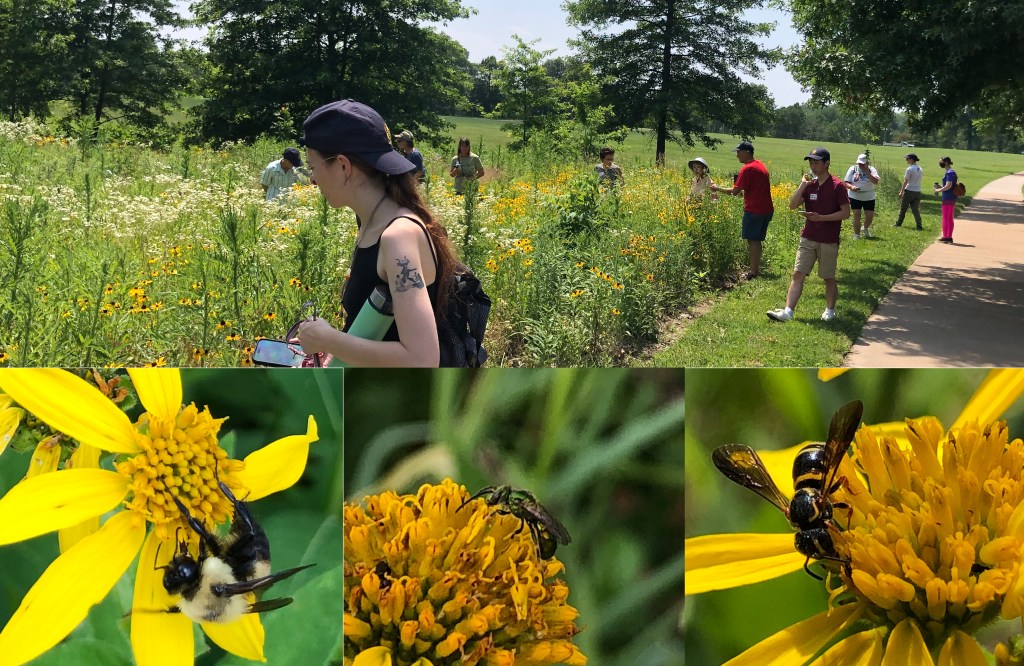
Other Backyard Science Opportunities
Interested in getting involved with other research opportunities this year? Here’s another:
Invasive Mosquito Behavior
Lauren Johnson, a second-year Ph.D. student in the Ecology and Evolutionary Biology program at WashU, is studying the host-seeking behavior of the aggressive daytime-biting tiger mosquito across St. Louis City. She is looking for survey locations to see where these invasive mosquitos are present and when they are active.
Johnson’s team wants to investigate the following:
- At what temperatures do the tiger mosquitoes begin and end host-seeking during the day?
- How active is this species at night? And if it’s active, does activity vary with the intensity of night-time lighting in the area?
The first study involves 2-3 people conducting a catch-and-release mosquito survey for 20 minutes at your residence in the morning and afternoon. They would perform these surveys weekly through September. The team is specifically looking for houses with a backyard or other outdoor space that is not overly disturbed during the sampling period by construction, pesticide spraying, etc.
The second study involves them arriving at your residence in the late afternoon/early evening to assemble and set a host-seeking trap, leaving the trap overnight, and then returning in the morning to retrieve the trap. They will also return at night after dark to use a light meter to measure the intensity of ALAN (Artificial Light at Night) around your residence. Like the first study, they are looking for a house with a backyard or other secure outdoor space that is not overly disturbed during the sampling period with construction or pesticide spraying. The space also needs access to an outdoor electrical outlet for the host-seeking trap. This second study will only be conducted if they have detected the tiger mosquito at your residence during daytime host-seeking surveys. The team will sample once every other week for one month, totaling 2 sampling sessions, but may ask to extend sampling beyond one month if they see anything interesting!
Johnson notes, “We would enjoy your presence during sampling to talk more about what we are doing. However, it is optional for you to be present during sampling if we have your permission to access the space without you.”
Importantly, neither of these studies will attract mosquitos in ways that would lead to increased numbers at your house! They want to assess the natural presence of mosquitoes and their behavior.
Interested? To discuss more in detail, contact Lauren Johnson via email at johnson.l.e@wustl.edu!
